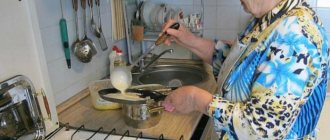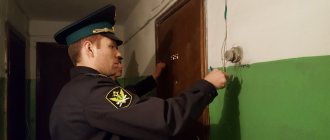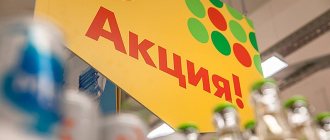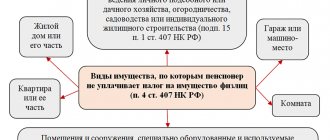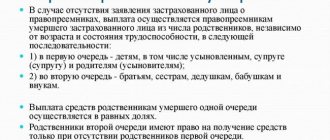How much can you reduce water consumption?
With a competent approach to water consumption in an apartment, it is possible to significantly reduce resource consumption.
Savings can reach 50% when washing hands, 73% when washing dishes, and 75% when brushing teeth . It is possible to further reduce water consumption during shaving. Savings can reach 88%.
With proper use of the resource, 1 person can save up to 13 liters per day. In a month, savings can amount to 390 liters, and in a year – 4745 liters.
A family of 4 people is able to reduce water consumption by 52 liters per day. In a month, savings can exceed 1,500 liters, and in a year – almost 19,000.
Basic Rules
To reduce water consumption by metering devices, it is recommended to follow a number of rules:
immediately repair any leaks throughout the house;- wash dishes in a container or sink with a stopper;
- Do not defrost food from the refrigerator under running tap water;
- Fully load the washing machine with laundry every time you wash;
- use special water spray nozzles on taps and shower handles;
- give preference to showering rather than taking a bath;
- use a toilet with dual flush;
- do not throw household waste into the toilet and do not clog it;
- When hand washing, do not rinse clothes in running water;
- use faucets with lever mixers.
Significant savings can be achieved by turning off the tap every time you brush your teeth, shave or wash dishes.
If several people live in an apartment, then you can save on water according to metering devices by purchasing a dishwasher. The main rules for saving water in the house are presented in the video:
How to save on cold and hot water?
On Earth, 70% is water, but only 3% of it is suitable for drinking. Many countries suffer from a lack of fresh water. There are no such problems in our country, however, this does not mean that these resources are infinitely large. Its processing and purification is expensive, as evidenced by the utility bills that the population receives monthly. It should be noted that utility bills are constantly growing, and the cost of services is increasing. Payment for hot and cold water supply takes up a third of all payments, and when calculated per year this amounts to a colossal amount. These costs can be reduced if you start saving on water. With rational use of water, costs can be reduced by two or three times.
- Country greenhouses made of polycarbonate and film
- Comprehensive, general cleaning of residential and office premises, washing windows, signs, shop windows, facades
- Repair and reupholstery of upholstered furniture: design changes
How to save on water? Basic ways to save
To reduce water consumption, the following measures must be taken:
- Take a shower instead of a bath, we save water by cutting the amount used in half. Reduce your shower time.
- Use a sink plug.
- Turn off the tap when you wash your face, brush your teeth, shave, or wash your hands or dishes.
- Install the spray nozzle on the faucet; when washing dishes, a much smaller volume of water will be used.
- Regularly and systematically check the plumbing system for leaks, make sure that the tank and faucets do not leak. (Just one leaking toilet consumes two cubic meters per day).
- Install modern lever mixers, they allow you to save on water due to the fact that cold and hot water mix faster and reach the desired temperature.
- Buy toilets with a dual flush system or place a closed plastic bottle of sand in the cistern.
- You need to install a meter for both hot and cold water.
- Buy a high-efficiency washing machine at a low cost.
- Load your dishwasher and washing machine fully, not half-load.
- Buy detergents that do not require additional rinsing.
- It would be useful to use recirculation systems. They allow you to use water after a bath, spending it on secondary needs.
- To save on hot water, install a boiler. The difference in tariffs for hot and cold water supply is five times.
Practical tips on how to save money
Let's look at an example of total water consumption during a week of use if a person took a bath or shower.
⇒ Order: Apartment renovation.
Water consumption table
| Total consumption in the bathroom, l | Total consumption per shower, l | Days |
| 100 | 30 | 1 |
| 200 | 60 | 2 |
| 300 | 90 | 3 |
| 400 | 120 | 4 |
| 500 | 150 | 5 |
| 600 | 180 | 6 |
| 700 | 210 | 7 |
In some regions of our country, compensation is provided for those people who use devices that provide the opportunity to save water.
Most modern plumbing suppliers offer discounts to their customers on dual flush toilets and spray heads.
✏ Interesting: How to care for a washing machine so that it lasts a long time?
The main way to save money is to purchase the installation of a cold and hot water meter . This is beneficial if several people are registered in the apartment, but only one person actually lives. According to the standards set by the state, there are 10-11 cubic meters of cold water per person, and according to the meter, the consumption is 4-5 cubic meters. In addition, if you do not have a water meter, you pay not only for yourself, but also for neighbors with debts, pipe leaks and emergency situations.
Based on their operating principle, water meters can be classified into:
- electromagnetic/induction;
- ultrasonic;
- vortex;
- tacheometric (turbine and vane type).
The latter type is most common among the population. Its main drawback is its high sensitivity to pollution. Therefore, when installing it, special mesh filters are installed in front of the inlet hole, which prevent large particles from entering the base of the water meter.
⇒ Order: Stairs and steps made of artificial stone!
Installing a boiler or geyser allows you to save on hot water due to the difference in tariffs for cold and hot water supply. The difference also covers the costs of consumed electricity or gas. When choosing heating equipment, it is necessary to take into account the specific needs of a particular family. Statistics show that to fully provide for a family of three or four people, a volume of 150-200 liters is enough. Boilers are of two types:
- flow-through;
- cumulative.
The second type is the most popular among the population due to the fact that it is more economical and consumes significantly less electricity. It is better to entrust the installation of this large and difficult-to-connect equipment to plumbers and electricians.
Gas boilers are classified into:
- single-circuit;
- double-circuit.
Double-circuit boilers perform a double function. They provide the consumer not only with hot water supply, but also serve as an autonomous heating system. And even despite the economic crisis and the constant rise in price, natural gas remains the cheapest and most accessible type of fuel.
✏ Interesting: How to choose a good toilet and not make a mistake in choosing
Having such data and motivation, the population simply must pay special attention to this issue and know how to save on hot and cold water. This will not only reduce money waste, but also worry about fresh water supplies throughout planet Earth.
Difference in savings for cold water and hot water meters
In houses, cold water is always consumed more than hot water . Therefore, more attention should be paid to saving cold water, since most of the consumption is accounted for by cold water. This is especially true when using the toilet, washing machine and taps in the kitchen and bathroom.
At the same time, tariffs for hot water supply are significantly higher than for cold water supply. Therefore, you should especially pay attention to the consumption of hot water when taking a shower and washing dishes.
The difference in savings compared to cold water supply lies in the subsequent payment of utilities. Without saving, hot water bills will come with large sums.
What do experts advise?
The active increase in tariffs for housing and communal services has generated a lot of talk. Experts who know how to save on bills began to be invited to radio and television shows. Here's what they recommend:
- Soak dishes before washing. Residents of Western countries have lived by this principle for decades. Soaking not only saves on water consumption, but also makes the process of washing dishes easier. Residues of food and dried liquids stuck to the plates can be easily washed off if the dishes are soaked for several hours in a sink with detergent, previously closed with a stopper. Usually two sinks are used for these purposes; in a single case, you can use a bucket or deep bowl.
- Before washing, kitchen utensils are wiped with a sponge with a fresh portion of detergent, and only then rinsed. To have less trouble with soaking, you should use frying and baking less often. Boiled and steamed food is easier to wash off dishes and is good for health.
- Use used water. If you have water left in the kettle or after boiling eggs, do not rush to throw it out. The recycled liquid can be used for good purposes: watering indoor plants, wiping dust or floors, using it to soak dishes, etc.
- The easiest way to collect liquid is to place a container at the bottom of the sink every time you wash vegetables or fruits.
- The use of recycled water is practiced all over the world. Australians use the liquid collected in the bathtub and kitchen, using it to wash cars or to put it into the toilet tank. In Germany, the remaining boiled water is poured into a thermos and used for cooking or washing dishes.
Shower wisely. Once upon a time, only rich people could afford to soak in the bathtub. Now this pleasure cannot be called affordable either. The average bathtub's volume is several tens of liters, so if you want to save on your water bills, take a shower. There is another reason to give up a bath - it’s not particularly hygienic.
Saving on water treatments is easy:
- shower more often with your loved one; when soaping, turn off the water;
- install a diffuser on the faucet (it will help save 40% of water);
- Do not turn on the tap under high pressure.
In order to have a comfortable shower, study in advance the interior features of a bathroom with a shower.
However, sometimes you can pamper yourself and soak in the bath without harming your budget. It will take a little patience and time: to draw a bath, you need to turn on the tap to a small stream of water. The meter will not be able to calculate water consumption, since the pressure will be minimal. Using this principle, you can draw a bath overnight and then use the water for domestic purposes.
Choosing economical plumbing fixtures
Special taps are used to minimize water consumption. They can often be found in cafeterias and fast foods with a large flow of people. This type of plumbing is equipped with touch sensors: capturing the heat of the hands, it supplies water at the optimal temperature, and when there is no movement, the water automatically turns off. This method helps to save water with the greatest comfort for consumers. It's not cheap, but the savings on bills will quickly pay for itself.
Care should be taken to update toilets. To wash off, outdated samples require a large amount of water - about 25 liters. Whereas modern models consume no more than four liters. This is an expensive way to save money, but very effective.
Repair water leaks promptly
A dripping faucet can be a huge drain on your budget. Every day it “steals” about ten liters of water, in a month the leak consumes more than three hundred liters, and over the course of a year it deprives you of 27 baths.
To avoid wasting resources and money, eliminate the leak in a timely manner. Finding them is not always easy, so you may want to invite a plumber to assess the condition of your plumbing fixtures.
You can check the flush cistern yourself - pour food coloring into it and observe the toilet bowl. If after a short time it becomes pigmented, then it’s time to fix the leak.
Magnet is illegal!
Often consumers resort to installing neodymium magnets on water meters . When water passes through the device, it begins to rotate in the opposite direction.
As a result, a situation of unaccounted consumption is created. Due to the revealed fact of using magnets on water meters, the consumer faces a fine. Its size is 10 times higher than the water tariff.
The consumer may also be charged with theft. In this case, he may be prosecuted. It can consist of either a fine or imprisonment.
You should only resort to legal methods of saving , since unauthorized attempts to reduce water consumption are quickly identified by the Criminal Code, after which consumers face liability, including criminal liability.
Useful technical devices
Distribution nozzles for taps
Crane adapters are used as advanced devices for filling a jet with air bubbles or for crushing, “fluffing” one narrow jet into several dozen with a “rain effect”. This increases the droplet distribution area without increasing water consumption.
They are used in cases where the standard factory mesh on the faucet is not effective enough.
Unlike some high-tech shower heads, adapters for saving tap water can already be found not only in Moscow and other megacities, but also in any provincial city.
Sellers on the Internet give advice on how to save water on the meter with this device, showing a video of how in 10 seconds a stream from a control tap fills three times the volume.
Shower heads
Simple shower heads operate on a similar principle, are widespread and can reduce water consumption when showering by 20%. However, the task of modern engineers is more difficult, because it is necessary to distribute moisture throughout the entire volume of the body without compromising the feeling of comfort while taking a shower. This is solved thanks to the complex design of nozzles and computer modeling.
Introduced in 2015 as a startup, the Nebia nozzle (USA), creating a “warm fog”, increased the coverage area of body droplets by 10 times with a reduction in water consumption by up to 70%. The declared annual savings for a family of 4 people is 80 thousand liters.
Toilets cisterns
When flushed, toilet cisterns account for about 25-30% of the total water loss in the apartment. The following will help reduce consumption:
- “Double buttons” with which the deflated volume is regulated. On average, a small drain is 2-3 liters, a standard drain is 6-8 liters. At the same time, thanks to the auger and the specified rotation, the toilet bowl is cleaned effectively even in economy mode.
- Aqua-stop-mode button. The first press of the button starts the drain, the second – stops it.
- Reducing the tank by inserting a special Hippo bag, which occupies a volume of 2-3 liters, or a technological “brick” Drop-A-Brick. Such a rubber “brick” can increase in size up to 2 liters, saving up to 11 thousand liters per year. The domestic analogue of these technical devices is a real brick or a filled plastic bottle.
Economical sink drains
This category includes all plumbing fixtures that are designed so that water from the washbasin immediately or through an intermediate storage tank enters the toilet, simultaneously flushing.
- The washbasin is a single unit with a tank, which is constantly filled with each turn of the tap.
- A recirculation system using pipes, where the tank is automatically filled with used and new water in a ratio of 50% to 50%.
- The AQUS system, which is installed under any sink and collects, filters and disinfects waste water before it is poured into the tank. The estimated reduction in metered losses is 35 liters per day per person.
Exotic “dry” toilets, dry toilets
A device that is more often used in trailers and mobile camps (tent cities), however, in case of interruptions in water supply, it can also be used in apartments. One of the latest developments is the Dry Flush toilet. In such devices, flushing is not provided at all, and all waste ends up in a bag. When you press the button, the bag is wrapped, sealed and goes into a container at the bottom of the toilet, and a new one comes out of the rim in its place.
Eco-kettle with two tanks
The first one fills completely and the temperature in it does not increase. The second one collects as much water from the first as is needed for boiling (1-8 cups). Repeated boiling raises many questions among doctors, so in order not to empty the kettle after each boil, they use an economical innovation.
